Recent paper (behind paywall) An Alternative to ‘Celtic from the East’ and ‘Celtic from the West’, by Patrick Sims-Williams Camb. Archaeol. J (2020) First View.
NOTE. For those who don’t have access to it, you can check other recent similar papers by the same author, like Sims-Williams (2009, 2012, 2017).
Interesting excerpts (emphasis mine):
Celtic origins
(…) there have been three main stages of scholarship: (1) the Celts are identified with the Hallstatt and La Tène ‘cultures’ of the first millennium BC; (2) then the discovery of contemporary Celtic language inscriptions (Lepontic and Celtiberian) in the ‘wrong’ areas casts doubt on whether the ‘ethnolinguistic’ Celts can be identified archaeologically; (3) most recently, however, they are associated with the archaeological cultures of the Atlantic zone of c. 3000 BC or even earlier. In this paper, I argue that both the new ‘Atlantic’ model and the older ‘central European’ one, though alluringly exotic, are unsupported by any solid evidence and are inherently implausible. I shall conclude by suggesting a realistic, if less romantic, scenario: ‘Celtic from the centre’.
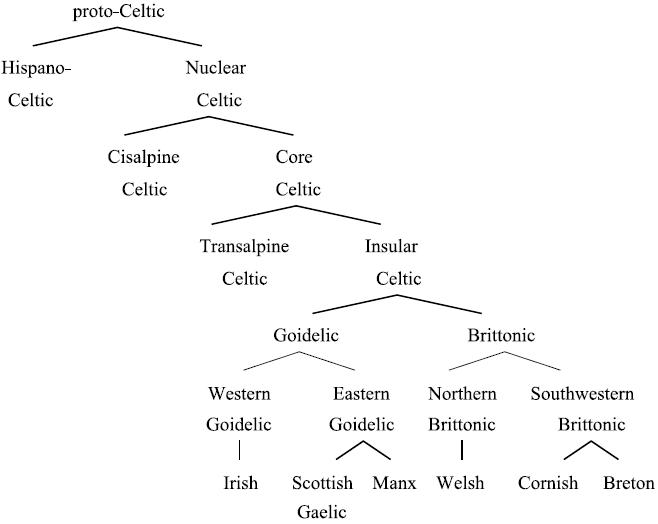
Celts from the East?
(…) how far west had Proto-Indo-European travelled before it evolved into Celtic? This was—and remains—a problem, for the picture is complicated by awkward evidence for eastward Celtic movements in the historical period. Thus the obviously Celtic ethnic, place- and personal names of Galatia in Turkey (Freeman 2001; Sims-Williams 2006) are clearly due to the Celts’ documented eastward migrations of the third century BC, as reported by Greek writers (Tomaschitz 2002, 142–79).
Other eastward migrations raise similar problems. The Volcae Tectosages were settled north of the Danube in ‘the most fertile areas of Germany, around the Hercynian forest’, according to Julius Caesar (Gallic War 6.24). Their tribal name is linguistically Celtic (‘property seekers’), as is the name of the Hercynian forest (‘oak forest’), one of the earliest attested Celtic place-names, already mentioned by Aristotle; but Caesar is adamant that the Volcae Tectosages had migrated eastwards across the Rhine from Gaul (Falileyev 2010, 132, 214–15, 242; 2014, 46–7; Tomaschitz 2002, 180–84), and unfortunately we do not know which Celtic-speakers first named the great Hercynian forest—as the forest was so vast, those who named it may have lived a long way from it (Sims-Williams 2016, 9 n. 16).
Another linguistically Celtic (Falileyev 2010, 10, 77–8) but problematic eastern ethnonym is that of the Boii of Bohemia. No ancient author claims that the Boii were indigenous to Bohemia. Instead, Caesar and Tacitus relate that they crossed the Rhine eastwards into Noricum (Caesar, Gallic War 1.5) or Bohemia (Tacitus, Germania 28), while Strabo (Geography 5.1.6) states that they migrated from northeast Italy to ‘the regions around the Danube, where they dwelt with the Taurisci’, a people he identifies as Celts (Geography 7.2.2, citing Posidonius) (…)
The origin of the north Italian Celts presents similar problems, and any arrows on modern maps are speculative, as rightly noted by Cunliffe (1992, 133) and Collis (2003, 93–7; contrast Cunliffe 1997, 71–2, figs 55–6). No contemporary written evidence survives. Nevertheless, the tradition reported by Livy c. 26 BC, that the various contingents came from east central France, is quite credible, despite his confused chronology (Collis 2003, 97–8; Pare 1991).
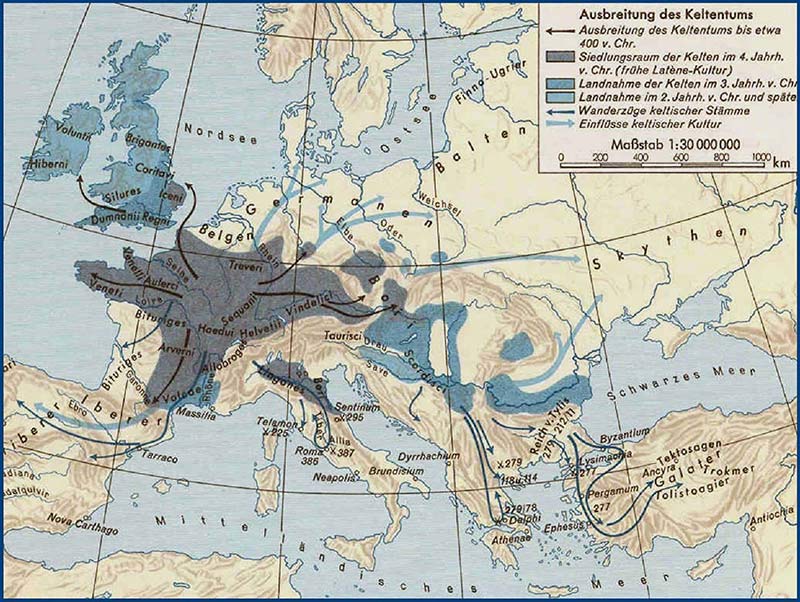
Deprived of support from Hecataeus and Herodotus, the ‘Celtic’ label for the ‘eastern Hallstatt culture’ has to depend on Celtic place and personal names. But these are attested too late to be useful. For example, Arto-briga, 50 miles northwest of Hallstatt, is a transparently Celtic placename, ‘bear-fort’, and so is Gabro-mago ‘goat-field’, 30 miles east of Hallstatt, yet they are only attested in late sources (Ptolemy c. 150 AD; the Antonine Itinerary; and the Tabula Peutingeriana) which long post-date the Celtic eastward migrations of the fourth and third centuries (Falileyev 2010, 58–9, 126; Talbert 2000, maps 19–20). We cannot assume (with Meid 2010, 14) that such names are ancient.
Both in Austria and eastwards into Hungary (Pannonia), the Celtic place-names seem to form a superstrate above an older layer of toponymy which Peter Anreiter called ‘Eastern Alpine Indo-European’ (Anreiter et al. 2000, 115; Anreiter 2001; cf. Falileyev 2002). If a linguistic label really had to be attached to the ‘eastern Hallstatt culture’, Anreiter’s ‘Eastern Alpine Indo-European’ would be preferable both to ‘Celtic’ and even more so to ‘Germanic’, recently suggested by Renfrew (2013, 216) when rightly questioning whether ‘the Hallstatt chiefs of the Heuneburg in the 6th century BC . . . spoke a Celtic language at all’. It has to be remembered that archaeological ‘cultures’ and languages do not have to coincide (cf. Lorrio & Sanmartí 2019; Sims-Williams 2012b, 441–2). It has also to be remembered that there were probably many more languages around than the familiar ones like Celtic, Germanic and Italic. According to Prósper (2018, 119), for example, ‘Pannonia forms a part of a vast linguistic continuum in which an indeterminate number of Indo-European dialects was once spoken’.
The density of Celtic-looking place-names in the East Alpine region is lower than in Britain or France (Raybould & Sims-Williams 2009, 40, 57; Sims- Williams 2006, 162–6, 175, 222), and the same is true further east (Falileyev 2014; Repanšek 2016; Sims-Williams 2006). The sparse but often militaristic nature of these eastern place-names suggests relatively late settlement by a Celtic-speaking elite (cf. Anreiter 2001, 203 nn. 702–3; Meid 2008, 189).
In contrast to its shortage of Celtic place-names, Noricum has far more than its share of Celtic personal names — more for its size than any other part of the Roman Empire. This presumably reflects the relatively privileged status granted to the Noricans who identified as Celtic when the inscriptions were erected in the first three centuries AD, rather than the situation five or six centuries earlier (Meid 2008; Raybould & Sims-Williams 2007, ix; 2009, 37–43, 54–6). Subliminally, these impressive inscriptions may have reinforced modern impressions that Noricum and its region were near the Celtic homeland. For that eastern homeland there is no early evidence, as we have seen. ‘Celtic from the East’ resulted from a circular argument by which the classical sources such as Herodotus were misread so as to apply the Celtic label to the ‘Hallstatt culture’.
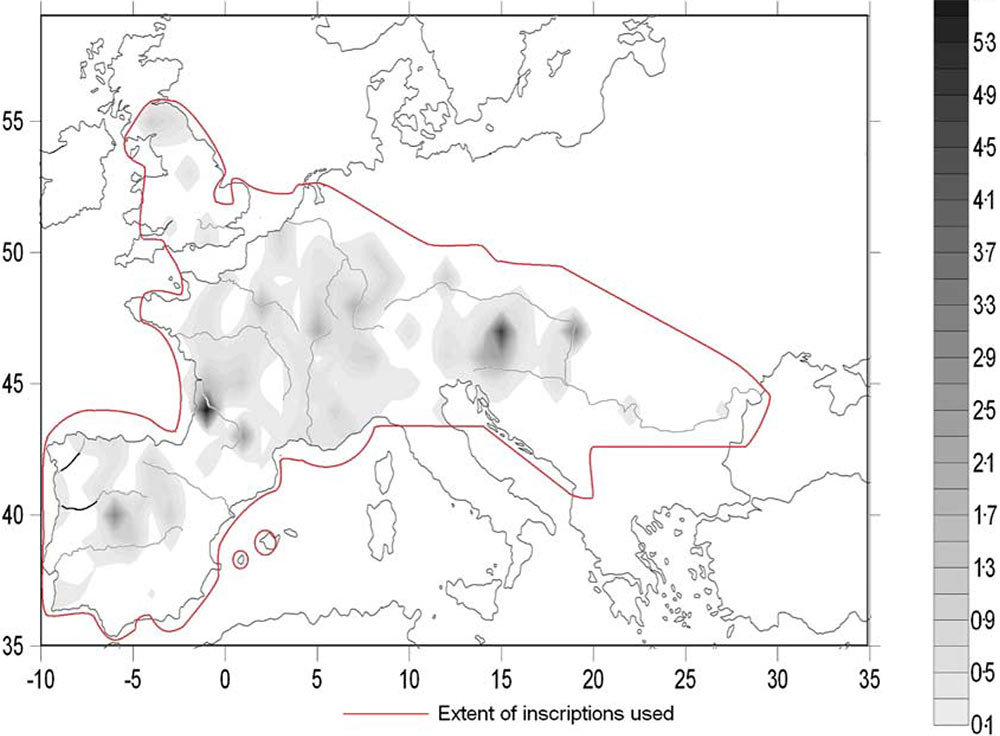
Celtic from the West?
The text goes on to explain how his own compiled data has been misused and misunderstood in Cunliffe’s publications:
The ‘strong western concentration’ of names needs some explanation. I began the research by assembling and mapping by 1-degree square all ‘Celtic-looking’ names, i.e. names which might contain Celtic elements such as DUN, BRIG (Fig. 4, below), or MAG. The raw totals for ‘Celtic-looking’ names were given square-by-square and then presented as percentages of the total number of names in the square (‘Celtic-looking’ + ‘non-Celtic-looking’) (Sims-Williams 2006, 163–5). Since isolated ‘Celtic-looking’ elements were bound to turn up by chance in otherwise non-Celtic areas, most of the rest of my book was devoted to detailed sifting and mapping, with the aim of establishing the geographical range of Celtic names (Sims-Williams 2006, 301, 304, maps 11.1–2) rather than their density (Sims-Williams 2006, 173–305).
Even ‘taken at its face value’, Oppenheimer’s ’90 per cent’ map (like the ‘100 per cent’ maps just mentioned) shows that the ‘Celtic-looking’ toponymy of France is at least as dense as that of the Iberian peninsula, and that the peninsula has great tracts which do not look Celtic at all, both in the south and in the east. The distribution of Celtic personal names in Latin inscriptions gives the same impression (Raybould & Sims-Williams 2009, 48; Sims-Williams 2012b, 439; see Figure 2, above). These blanks are not what one might expect if Celtic really spread from the Atlantic.
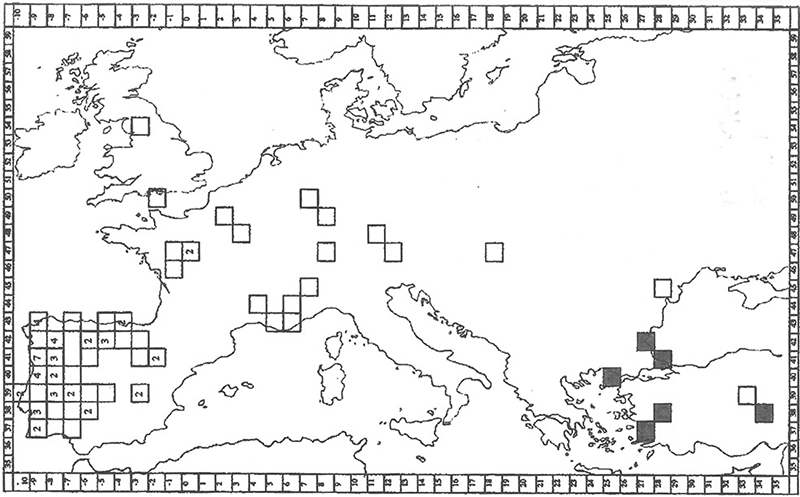
Moreover, the Celticity of the Iberian peninsula is exaggerated on all these maps. Nearly half of the relevant peninsular names contain Celtic versions of the Proto-Indo-European root *bʰr̥gʰ- ‘high’ which in Celtic developed the distinctive form *brig-, whence the Celtic words *brig-s and *briga, which gave Old Irish brí and Welsh bre respectively. These Insular Celtic words mean simply ‘hill’, but on the Continent the meaning seems to be ‘hillfort’ or ‘oppidum’ and in northwest Hispania briga is often translated as castellum in Latin sources (Luján 2011; Sims-Williams 2006, 49–53, 307, 328; Untermann 2018, 136). (…) Out of my 153 locations in Hispania with ‘Celtic-looking’ names (Sims-Williams 2006, 142–51), 62 (41 per cent) included BRIG (or its variants BRIC, BIRIK, BRIS, BRIA), the next most popular string being SEG (or SEK) ‘power, victory’, in 17 locations (12 per cent).
Thus the Celtic-looking toponymy of Hispania is heavily weighted towards BRIG and is much less varied than that of areas such as France and Britain. This monotonous lack of variety suggests that it lacks chronological depth. Moreover, alongside true Celtic compounds like Sego-briga ‘power-hillfort’ (in Celtiberia) we find many hybrids with non-Celtic or even Latin first elements, e.g. Conim-briga (now Coimbra, Portugal) and Flavio-briga (Castro Urdiales, Spain), the name of the latter colonia having replaced Amanum portus according to Pliny (Natural History 4.20.110). Such hybrids may sometimes indicate no more than an awareness of the prestige of Celtic culture in the way that modern English-medium creations like Bourn-ville and Minnea-polis reflect the prestige of French and Greek. It is well known that foreign place-name elements can be borrowed in bilingual communities and then spread into non-bilingual areas, a case in point in Welsh toponymy being cnwc ‘hill’, from Irish cnoc (Wmffre 2007, 54-6).
Another example is *burg- from the Proto-Indo-European root *bʰr̥gʰ-. This was borrowed by the Romans from Germanic (or from a language such as ‘East Alpine Indo-European’) as burgus ‘watchtower, citadel’, a word that then turned up in Latin place-names as far afield as north Africa (Sims-Williams 2006, 4, 317–18). In the same way Celtic briga may have been current as a term for various types of hillforts and oppida in Iberia well outside the Celtic-speaking regions (cf. Gorrochategui & Vallejo 2019, 340 n. 11; Luján 2019, 327–81; Sims- Williams 2012b, 44). And in areas where Celtic names are otherwise rare, briga/castellum may indicate relatively recent Celtic intrusions (Luján 2011). Given the chronology of hillforts in the peninsula (Arenas-Esteban 2012, 36; Fernández-Götz 2018, 146-7; Lorrio & Ruiz Zapatero 2005, 222), it is hard to imagine that many of the peninsular -briga names are much older than the first millennium BC.
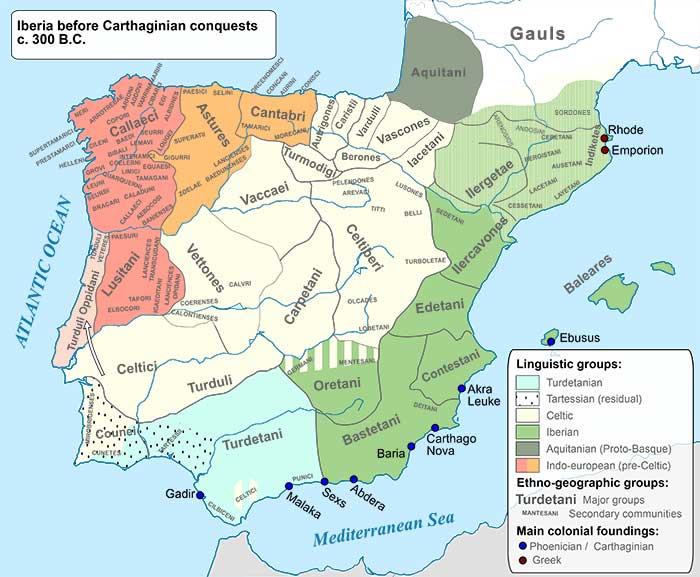
Celtic from the Centre
A more economical view of the origin of the Celtic languages, consonant with the historical and linguistic evidence, might run as follows (cf. Sims-Williams 2017a, 432–5). Celtic presumably emerged as a distinct Indo-European dialect around the second millennium BC, probably somewhere in Gaul (Gallia/Keltikê), whence it spread in various directions and at various speeds in the first millennium BC, gradually supplanting other languages, including Indo-European ones—Lusitanian and ‘Eastern Alpine Indo-European’ are candidates—and non-Indo-European ones—candidates are Raetic, Aquitanian/Proto-Basque, ‘Iberian’, ‘Tartessian’ and Pictish (Rodway 2020; Sims-Williams 2012b, 431); and presumably there were dozens more languages about which we know nothing, especially in northern Europe.
The reasons for suggesting Gaul (perhaps including part of Cisalpine Gaul) are: (i) it is central, obviating the need to suppose that Celtic was spoken over a vast area for a very long time yet somehow avoided major dialectal splits (cf. Sims-Williams 2017a, 434); (ii) it keeps Celtic fairly close to Italy, which suits the view that Italic and Celtic were in some way linked in the second millennium (Schrijver 2016). During the first millennium BC, Celtic spread into eastern Iberia (probably well before the time of Herodotus and Herodorus), into northern Italy (as first evidenced by the Lepontic inscriptions in the sixth century: Stifter 2019), into Britain, and perhaps already into Ireland (though Ireland is undocumented), and also towards the east, eventually reaching Galatia in Turkey in the third century BC (as documented in Greek sources).
Finally, in the latter part of the first millennium BC, Celtic may still have been expanding and consolidating in many areas, both east and west, before it was overtaken by the expansion of the Roman Empire. ‘Celtic from the Centre’ may lack the time-depth and exotic locations that appeal to romantics, but the economical hypothesis sketched above is realistic and fits the known facts. According to Caesar, central France was occupied by the Galli (Gauls), who called themselves Celtae in their own language (Gallic War 1.1), and according to Livy it was the homeland of the Gauls who migrated to Italy. It is an obvious place for Celtic ethnogenesis.
(…) Even the above hypothesis entails a gap of perhaps a millennium between the hypothetical emergence of the Celtic language and its first attestation in the Lepontic inscriptions of the sixth century BC. Currently we have no direct linguistic evidence about what occurred during that gap.
Oldest Hydrotoponymic layer
Similar arguments could be found in Busse (2007), as summarized in Udolph (2009):
Busse’s project, which he only offers in broad outline, “intends to find an answer to the question, to what extent hydronyms provide a meaningful picture of the early settlement history of Celtic-speaking population groups, using and bundling the results of previous studies and projects on the topic of ‘Celticity’ (Busse 2007: 91f.). Following H. Krahe and completely correctly, it is primarily about water names based on words for “water, river, flow” etc. Taking into account studies from Germanic, Baltic and Slavic areas, he develops the following key questions:
- Is an area of ”Celtic hydronymy” identifiable that can be considered the nucleus of a Celtic expansion, that is, an original homeland?
- To what extent does this nucleus coincide with the expansion of the Hallstatt or La Tène culture?
In order to find answers to this, he deals with water names that are in Celtic territory but are of pre-Celtic origin, and also with Celtic names. Be included Ainos, Aenus, Dubis fl./Doubs, Douglas and cognates, Devy/Devon, Devoke Water, old Irish dobur with nfrz. Douvre (1128 Dobra), Douvres (approx. 380 Dubris), Verdouble a. 79 Verno-dubrum, etc .; Spanish Dobra and others, German Tauber, English Dover; the clan around Glanis, Glanum, Glanon, Glan, Glene, Glane; bava <* gweh₃w- ‘Fango’, cf. kymr. baw ‘dirt’; borm- / borw- / borb- <* bʰer- 'rise, wall, ferment, cook' in Borbro (Bourbre), Borvo (n) 'source god', Formio, in France Bormane (Ain), Bourbonne (Aube), La Bourbre (Isere) and many more; brig- <*bʰr̥gʰ- to *bʰeregʰ- 'high, sublime', perhaps with the meaning 'upper course' in Brigia (Braye = Loir), Brigulos (Saône → Rhône) and much more; esk- / isk- <*peisk-, medium ir. esc 'water' with Esca / Escia / Hisca (Isch → Saar) and others; fruta- <*s(w)rutu-, cf. Irish sruth ‘torrent’, in Frudis, river in Belgica etc.
In the conclusion, the results are summarized using a distribution map: “As a first preliminary result, including the map material, the following can be stated: The Celtic hydronymy is distributed in a space that is located on the northern Alpine fringe along the Danube, and extends to the upper and middle reaches of the Rhine and the Rhône, including the tributaries. The starting area of the Hallstatt culture is not congruent with this area, even though the most important West Hallstatt and early La Tène finds can be found in this area” (Buses 2007: 97).
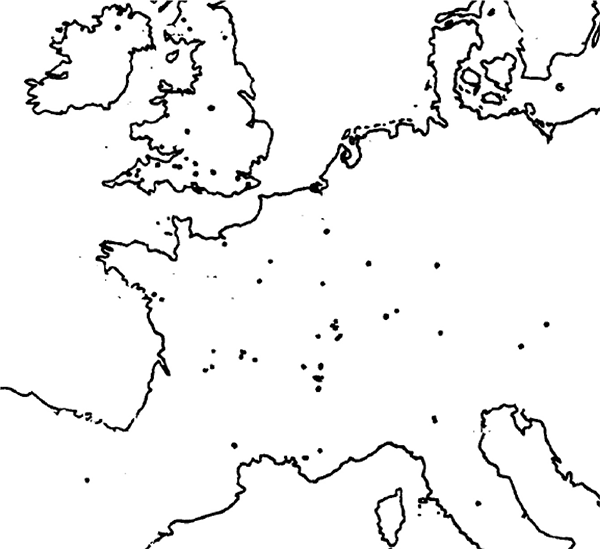
Other evidence
More recent data on where the Celtic homeland will most likely be found with the help of ancient DNA:
- On the France Bell Beaker-like Urnfield genetic origins of Celtiberians, and the older Iberia Bell Beaker-like Galaico-Lusitanians: North-West Indo-Europeans of Iberian Beaker descent and haplogroup R1b-P312.
- On the France/Southern Germany Bell Beaker-like origins of Steppe ancestry in the “Italic cluster”, and the more recent origins of Balkan-like and Aegean-like ancestry in the “Etruscan cluster”: R1b-L23-rich Bell Beaker-derived Italic peoples from the West vs. Etruscans from the East.
- Italo-Venetic-speaking R1b-rich Palafitte-Terramare samples continuing Italy Bell Beaker-like ancestry well into historical Italic peoples make it possible that this intrusion of Northern ancestry proper of the artificially selected “Italic cluster” could be related to incoming Nuclear Celtic-speaking peoples. It is currently impossible without a complete geographical and temporal transect to discern which ancestry corresponds to which recently incoming groups.
- While modern populations are at best confusing (and at worst distorting) with regards to ancient populations and their ethnolinguistic identification, both The genetic history of France, by Pierre et al. Eur J Hum Genet (2020), and The place of metropolitan France in the European genomic landscape, by Biagini et al. Hum Genet (2020), support the nature of modern Basque ancestry as (mostly) a remnant of acculturated Common Celtic-speaking Iron Age peoples from the southern Pyrenees who became isolated and spread Basque to its known distribution during the Middle Ages. This was already suspected from the ancestry of modern Iberians in Bycroft et al. (2018), and was confirmed in Olalde et al. (2019).
- New paper on the Basque-Celtic similarities of “red devil” and “black wizard” concepts: Reflections on Some Ethno-linguistic Parallels between Celts and Basques, by Mikhail Zélikov JIES (2020) 48:1&2 (not yet officially published). While I am not a fan of mythological comparisons, and this paper seems rather weak on many specific palaeolinguistic details, I am sure that many such parallels will be found between both languages interacting to the north of the Pyrenees.
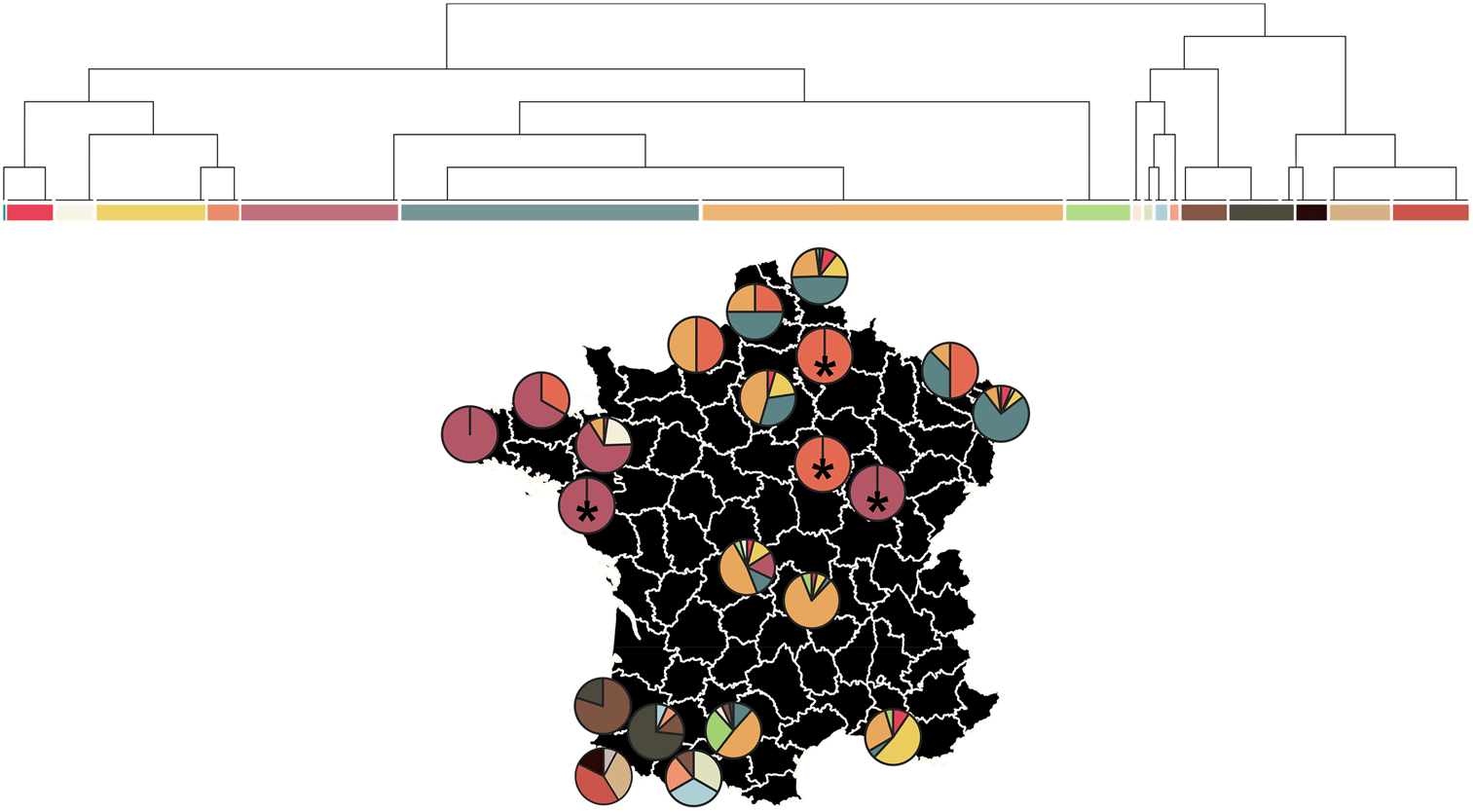

Conclusion
Palaeolinguistic data suggests that most of the ancestry found among Central European samples associated with East Hallstatt, like the Hallstatt Bylany sample of hg. R1b-FGC4183 – and older Bell Beaker-derived R1b-rich groups from Central-Eastern Europe – will more likely be related to ancestral North-West Indo-European-speaking (and possibly some of them becoming non-Indo-European-speaking) communities, whose languages became extinct after the small Common Celtic-speaking population close to the Western Alps expanded explosively, starting around the turn of the 2nd millennium BC.
In fact, the France Bell Beaker-like ancestry of incoming (probably Urnfield) migrants during the ethnogenesis of Celtiberians, the first to branch off from a Common Celtic trunk, offers a strong evidence of that genetic reality. The likely future tests including Hallstatt samples (like those from Slovakia) hoping to find a traditional origin of “Celts” in Central-Eastern Europe will be as useful as, well, other simplistic tests you might commonly find in population genomics, such as those equating “Steppe ancestry” with “Indo-Europeans”.
NOTE. Even more compelling of a West-Central European origin of Celts neighbouring non-Indo-Europeans from East-Central Europe is the finding of (Italo-)Celtic–Uralic contacts that have to be traced back as far as their likely Upper Danubian – Alpine homeland in the late 3rd to 2nd millennium BC…
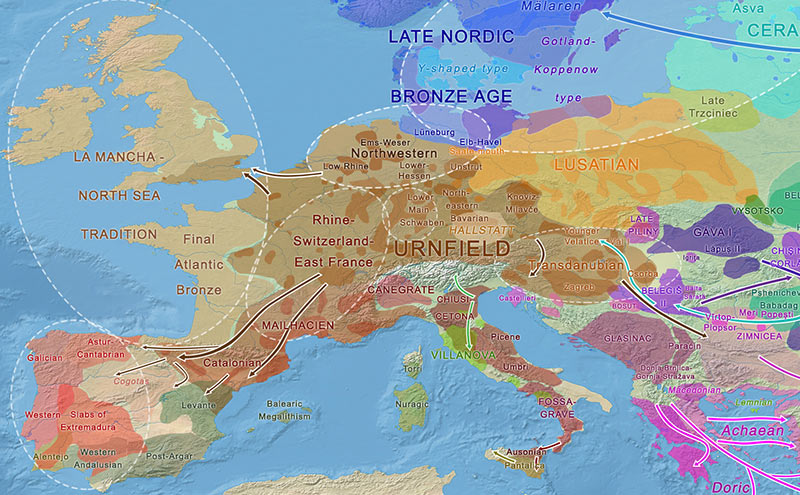
My father-in-law used to say that “there is nothing more embarrassing than an old person wearing old clothes”, probably a saying from his border village (of Portuguese origins), referring to how old people should at least try and show they have not abandoned all interest in the real world still spinning around them. After three years of sifting through endless papers on ethnolinguistic origins of Indo-European peoples, I can confidently say that this saying can be extrapolated to academic theories, too: There is little more embarrassing in the field of Indo-European studies than researchers trying to defend outdated hypotheses, especially when it is done against all new data; and, even worse, when these theories happen to fit the own previous ones, unsurprisingly and unoriginally corresponding to the preferable ones from a nativist point of view.
Celticists and archaeologists in general have offered in the past decades an important set of new proofs bashing the traditional pictures of native peoples of Europe that never truly die, including not only the British and Iberian perpetual Celts from the West, but also the already traditional accounts of Celts incoming from Central-Eastern Europe. A zombie picture that was strengthened by the late Gimbutas’ pseudo-mythic and anachronic vision of “Kurgan peoples” of the 2nd millennium, which some scholars are trying very hard to keep alive today despite the overwhelming new archaeological and genomic data contradicting it. This is what Sims-Williams (2020) has to say in that regard:
I have argued above, and elsewhere (Sims-Williams 2012b, 440), that instead of such unbridled speculation it would be better to work carefully backwards from the earliest known philological data in the mid first millennium BC. When we do so, we come up with the plausible hypothesis that Celtic need not have begun to spread from a central homeland (roughly France) much before c. 1000 BC. This economical hypothesis represents a reasonable starting point for future work and is open to falsification by the discovery of new inscriptions or other data.
Mutatis mutandis, the above case study may be useful to those considering the prehistoric linguistic geographies of other areas. To mention just one example, some archaeologists have a ‘presumption’, on the basis of the ‘Corded Ware culture’, that ‘some form of Germanic was spoken in south Scandinavia from c 3000 BC onwards’, whereas ‘linguists have rarely imagined that the Germanic language itself came into existence much before 500 BC’ (see Mallory et al. 2019, 1483). In such situations, archaeologists and philologists need to reconsider the nature and validity of the evidence they use.
Related
- R1b-L23-rich Bell Beaker-derived Italic peoples from the West vs. Etruscans from the East
- North-West Indo-Europeans of Iberian Beaker descent and haplogroup R1b-P312
- European hydrotoponymy (VI): the British Isles and non-Indo-Europeans
- Yamnaya ancestry: mapping the Proto-Indo-European expansions
- Italo-Venetic peoples related patrilineally to Terramare elites with their ancestry reported here
- European hydrotoponymy (V): Etruscans and Rhaetians after Italic peoples
- More Celts of hg. R1b, more Afanasievo ancestry, more maps
- Sea Peoples behind Philistines were Aegeans, including R1b-M269 lineages
- European hydrotoponymy (I): Old European substrate and its relative chronology
- European hydrotoponymy (II): European hydrotoponymy (II): Basques and Iberians after Lusitanians and “Ligurians”
- European hydrotoponymy (III): from Old European to Palaeo-Germanic and the Nordwestblock